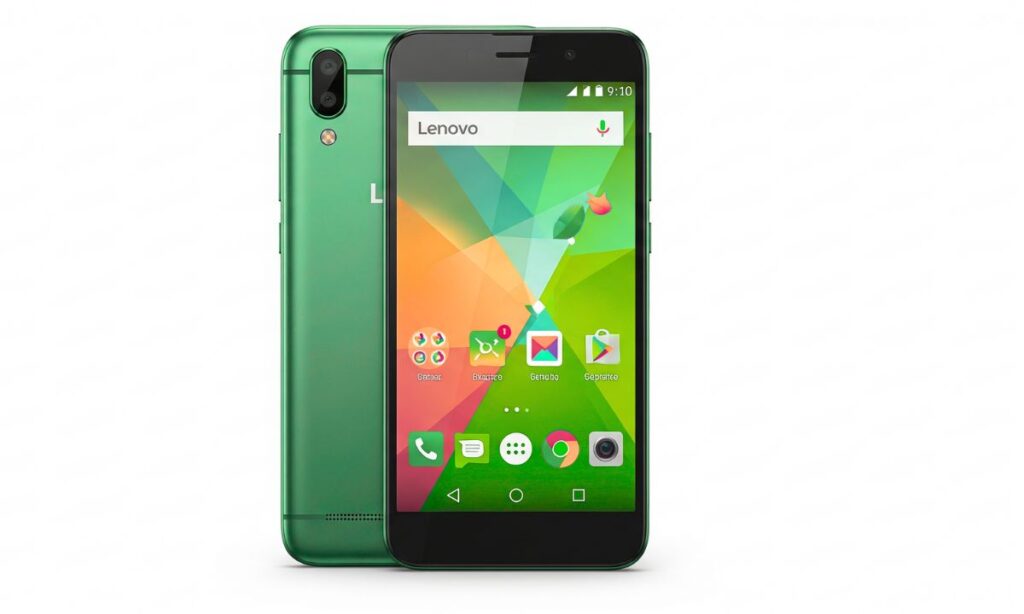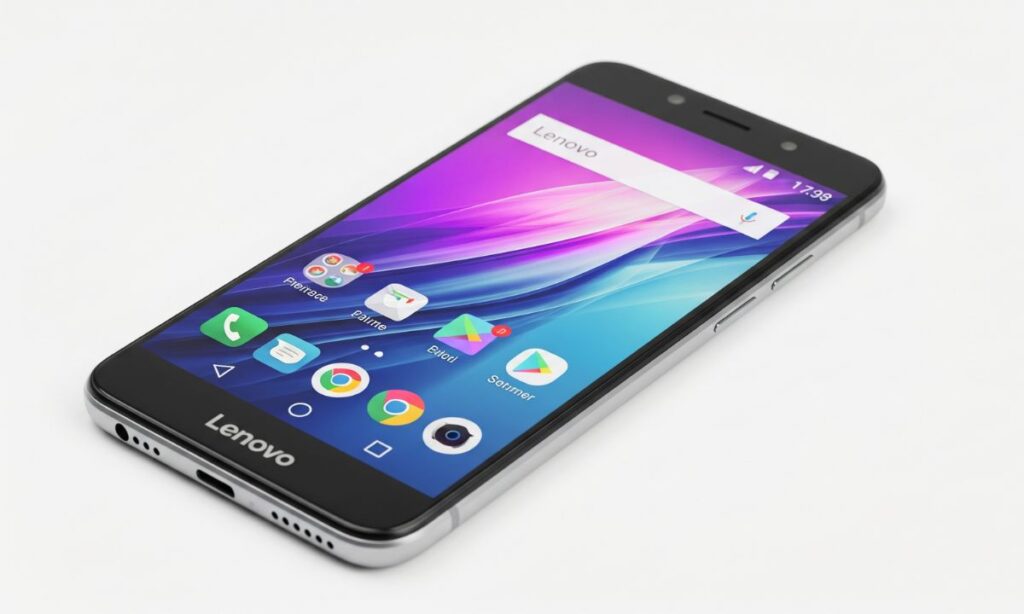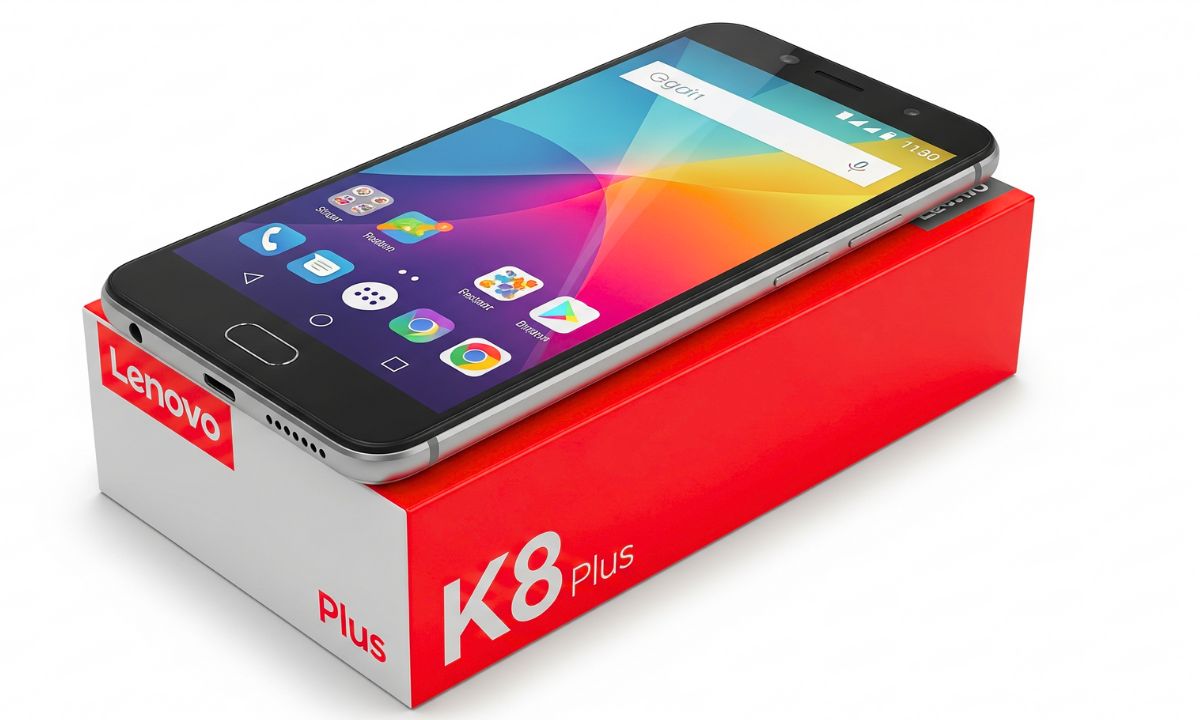Discover the raw strengths and hidden flaws of the Lenovo K8 Plus, now available at ₹4000. Explore this budget phone’s emotional appeal, battery power, camera, and real-world performance.

A Modest Debut with a Bold Heart
The Lenovo K8 Plus made its debut in 2017, quietly entering the Indian market during a time of intense competition. Unlike flashy phones with celebrity endorsements or glitzy ad campaigns, this one slipped into the hands of everyday users who valued functionality over brand hype.
Priced at launch around ₹10,999, and now available in used or refurbished markets for just ₹4000, it offered more than what most expected. It promised a performance-driven experience, without the distractions that came with over-engineered software.
Design That Speaks Without Screaming
At first touch, the Lenovo K8 Plus surprises you. The phone feels heavier than it looks, with a solid aluminum back, curved edges, and a textured grip that feels reassuring in the hand. It’s not a phone you have to baby. It feels like it’s built to be used, carried, dropped, and picked back up again.
The fingerprint scanner rests at the back where your index finger naturally lands. The physical buttons are tactile, sturdy, and precisely placed. There is nothing luxurious here, but it doesn’t feel cheap either. It simply feels honest.
A Display That Knows How to Please
You don’t expect to be impressed by the display on a phone priced at ₹4000. But the 5.2-inch Full HD IPS LCD screen delivers a viewing experience that feels personal. The color tones are natural. The brightness is enough to make outdoor visibility possible. The resolution makes text crisp, videos smooth, and photos enjoyable.
Whether you are watching YouTube, browsing images, or reading long articles, the Lenovo K8 Plus delivers a sense of ease that isn’t always common in budget devices.
Stock Android: Pure, Smooth, and Reliable
Perhaps the most talked-about feature of the Lenovo K8 Plus is its use of stock Android 7.1.1 Nougat. Free from pre-installed bloatware and bloated UI skins, the interface feels smooth, responsive, and light. Everything loads fast. There are no unnecessary transitions, and no memory-hungry apps running in the background.
Stock Android also made the device feel more responsive over time. Unlike phones that slowed down after a few months, the K8 Plus managed to keep things snappy, even after prolonged usage.
A Battery That Keeps You Free
Battery life on the Lenovo K8 Plus is not just good. It’s one of its strongest selling points. With a 4000 mAh battery, the phone offers a full day of heavy use and up to two days for moderate users. This kind of stamina gives you freedom—the freedom to leave your charger behind when you step out for the day.
You don’t need to panic during long calls, extended YouTube sessions, or while listening to music on a loop. The K8 Plus just keeps going.
Dual Camera Setup That Dared to Dream
The dual-camera system on the Lenovo K8 Plus consists of a 13 MP primary sensor and a 5 MP depth sensor. It was one of the few phones in its segment to offer bokeh-style portrait shots. And when the lighting was right, the results were genuinely surprising.
Subjects were captured sharply, backgrounds were elegantly blurred, and the image depth felt rich. It wasn’t perfect. In low light, the quality dipped, and shutter speeds slowed. But the experience of having DSLR-style shots in a budget phone was a treat many first-time users won’t forget.
Front Camera That Felt Real
The 8 MP front camera also delivered a satisfying selfie experience. Unlike many phones that soften details or overexpose faces, the K8 Plus kept things real. You saw yourself as you were—not overly airbrushed, but warmly lit and naturally toned.
The inclusion of a front flash added usability during low-light selfies or late-night video calls. Again, not groundbreaking, but deeply appreciated by users who wanted dependable front-camera performance.
A Musical Surprise with Dolby Atmos
Here’s where Lenovo added a touch of sensory indulgence. The K8 Plus comes with Dolby Atmos audio support, and it’s not just a gimmick. When paired with decent earphones, the audio output is immersive, rich, and layered.
Whether you’re listening to soulful ghazals or bass-heavy workout tracks, the sound quality makes an emotional impact. The audio surrounds you, grips you, and adds an unexpected depth to music consumption on a phone this affordable.
Processor and RAM: Quietly Capable
Powering the Lenovo K8 Plus is the MediaTek Helio P25 processor, backed by either 3 GB or 4 GB of RAM depending on the variant. This configuration ensures smooth multitasking, fast app loading times, and stable gaming performance for lightweight titles.
You won’t break speed records with this phone, but you also won’t be left frustrated. For daily use—calls, texts, browsing, videos, and even some casual gaming—the K8 Plus handles itself with calm precision.
Storage That Understands Real Needs
The phone comes with 32 GB of internal storage, but more importantly, it features a dedicated microSD card slot—not a hybrid tray that forces you to choose between storage and a second SIM. This made the device perfect for users who love hoarding music, videos, or images without sacrificing connectivity.
Expandable storage up to 128 GB was supported, which means it adapted well to growing digital needs.
Dedicated Music Button: A Thoughtful Touch
A small but delightful addition to the K8 Plus is its dedicated music key. This extra physical button allowed users to control playback or assign other quick actions. It added a tactile connection to the device—something you could feel and interact with directly.
This may sound minor, but in daily use, it became a cherished feature for music lovers.
Security That Just Works
The rear-mounted fingerprint sensor isn’t flashy or high-tech. But it works. It unlocks the phone quickly, recognizes fingerprints accurately, and rarely causes issues. For budget-conscious users who wanted security without complication, this was ideal.
Gaming Was Not Its Strong Suit, But It Tried
Gaming on the Lenovo K8 Plus was a mixed bag. Lighter games like Subway Surfers or Temple Run ran without issues. But demanding titles like PUBG Mobile often lagged or needed the lowest settings. This wasn’t a gaming powerhouse, but it didn’t pretend to be either.
It offered what it could—and within its limits, it delivered a decent experience.
Connectivity That Stayed Reliable
The K8 Plus supported dual 4G VoLTE, Wi-Fi, Bluetooth, and GPS. It had all the connectivity essentials in place and offered stable, consistent network performance. Call quality was solid, and mobile data stayed strong across different networks.
For a phone priced at ₹4000, this is more than most users need or expect.
Build Quality That Surprised Everyone
Phones in this segment often feel fragile. But the Lenovo K8 Plus holds its own. The aluminum body absorbs shocks well, the buttons remain responsive over time, and many users reported minimal issues even after years of use.
It aged gracefully—not like a disposable gadget, but like a dependable tool.
Where It Faltered: Software Support
The biggest frustration users experienced was with Lenovo’s inconsistent software updates. Android Oreo arrived late. Security patches became infrequent. Eventually, users were left behind while newer phones moved forward with better software experiences.
This lack of support deeply disappointed users who had otherwise fallen in love with the device.
After-Sales Service Left Many in the Dark
Lenovo’s customer support for the K8 Plus was underwhelming. Service centers lacked spare parts. Repair times were long. Queries went unanswered. Even if you had a phone that worked well, the fear of facing future issues kept users from buying Lenovo again.
Support is as important as specs, and here, Lenovo dropped the ball.
A Lost Opportunity for Lenovo
Had Lenovo improved its service and delivered timely updates, the K8 Plus could have been a long-term disruptor in the budget space. It had the hardware, the user love, and the performance needed to build loyalty.
Instead, it faded into the background, not because users didn’t love the product, but because the brand didn’t nurture the trust it had built.
Still Worth Buying at ₹4000? Absolutely
For those looking for a backup phone, a smartphone for parents or kids, or just a budget-friendly daily driver, the Lenovo K8 Plus at ₹4000 remains a great deal. It offers more than many brand-new devices in the same price segment.
Clean Android, long battery life, and excellent audio are hard to find at this price point—and the K8 Plus delivers all three.
The Emotional Aftertaste of Using the K8 Plus
What lingers long after you stop using this phone isn’t just its performance stats. It’s the experience. The comfort of its grip, the joy of pure Android, the warmth of Dolby audio—it all stays with you.
This wasn’t just a smartphone. It was a daily companion, a quiet achiever, a little piece of technology that understood what users truly needed.
Why It Connected with the Indian Audience
The Lenovo K8 Plus found a unique audience in India because it met real-world needs. Many users weren’t chasing benchmark scores or flashy features. They needed a phone that handled daily tasks, survived a few drops, delivered long battery life, and clicked decent photos at family functions. And in that department, the K8 Plus quietly excelled. It became a trusted device in small towns, school bags, office drawers, and even among elderly users unfamiliar with high-end tech.
Entertainment on a Budget
Entertainment was a huge part of the K8 Plus experience. With a clear Full HD screen and surround-style sound from Dolby Atmos, streaming content became enjoyable. Movies, web series, and music videos on platforms like YouTube or Hotstar didn’t feel like compromises. Even if you were on a long train ride or waiting in a queue, the phone helped pass the time with ease and joy. That made it more than a gadget—it became a companion in everyday boredom.
Multitasking Without Meltdowns
At its peak, the K8 Plus held up remarkably well with multitasking. You could switch between WhatsApp, YouTube, Instagram, and Chrome without the system slowing down or freezing. While modern flagships often boast massive RAM and ultra-fast chipsets, the K8 Plus proved that with clean software and smart memory management, even modest specs can deliver a fluid experience. For users who never expected this from a ₹4000 device, it felt like a secret win.
Durability That Defied Its Price Tag
Budget phones often sacrifice build quality. But with the K8 Plus, Lenovo made a different choice. Over the years, countless users have shared stories of drops, spills, and accidents—yet their phones kept working. This isn’t common in the budget segment. The K8 Plus didn’t pretend to be a tank, but it withstood regular wear and tear far better than expected. That physical resilience gave users confidence—especially in rural areas where repair centers are far apart.
The Role of Word of Mouth
The Lenovo K8 Plus succeeded in part because of word-of-mouth marketing. Unlike premium phones that rely on advertisements and influencers, this one earned its reputation through everyday recommendations. People shared positive experiences with friends, colleagues, and family. It was common to hear, “If your budget is tight, get the K8 Plus. It won’t disappoint.” This organic trust was built not by branding—but by consistent delivery.
The Evolution of User Expectations
Today, users want fast charging, 5G, and high-refresh-rate displays. But in 2017 and even now, for someone seeking basic smartphone functions at an ultra-low budget, expectations are very different. The Lenovo K8 Plus catered to this user perfectly. It didn’t overpromise. It didn’t pretend to be futuristic. It stuck to the essentials—and did them right. That humility made it age gracefully, even in a hyper-competitive market.
A Missed Opportunity for a Comeback
Had Lenovo revisited the K8 Plus formula in 2020 or beyond, with better cameras, updated software, and improved support, it could have reclaimed its space in the budget segment. The foundation was strong. The community existed. All it needed was the brand to listen. Sadly, Lenovo’s silence allowed other brands to overtake, and the goodwill the K8 Plus earned slowly faded into nostalgia.
Still Relevant in 2025?
Yes, even today in 2025, for someone needing a secondary phone or a device for offline education or light usage, the Lenovo K8 Plus still holds value. The price of ₹4000 makes it especially tempting. While newer phones in this price range often come with laggy software, weak batteries, or poor build, the K8 Plus still stands its ground. It may not shine, but it doesn’t stumble either.
Real Value Lies in Real Experience
Spec sheets tell one story. Real-world usage tells another. And in the real world, the Lenovo K8 Plus gave its users comfort, familiarity, and reliability. These aren’t features listed in marketing brochures—but they’re what matter most. That’s why the emotional memory of the K8 Plus stays with people long after they’ve upgraded. It was never about what it lacked—it was about what it gave consistently.
Why Simplicity Can Be Seductive
In a time when every phone tries to be everything, the Lenovo K8 Plus reminds us that simplicity can be seductive. There’s something emotionally comforting about a device that just works. No endless pop-ups. No confusing settings. No bloated promises. The phone asks nothing extra from you, and yet, it delivers. That balance of ease and dependability forms a subtle but powerful emotional bond—a rare thing in today’s tech-driven world.
The Emotional Pull of a Familiar Device
There’s a strange warmth in holding a device you’ve used for years. The scratches on the back, the slightly dimmed screen, the worn-out power button—all tell stories. The Lenovo K8 Plus, for many, became more than just a communication tool. It was the first smartphone they bought with their own money, the phone that kept them connected during lockdowns, or the one they gifted to a parent. And that emotional weight cannot be calculated through specifications.
A Legacy That Still Echoes Quietly
Even as technology races forward, some devices leave behind a quiet legacy. The Lenovo K8 Plus may not make headlines today, but its memory lingers in the minds of those who used it. It wasn’t revolutionary, but it was dependable. It didn’t change the game, but it made life easier for many. And sometimes, that’s the kind of success that matters more—when a simple tool earns a permanent place in your everyday story.
A Humble Device That Earned Its Respect
Over time, devices like the Lenovo K8 Plus teach us an important lesson—respect isn’t demanded, it’s earned. Through consistent performance, thoughtful design, and a user-first experience, this modest phone gained the trust of thousands. It didn’t rely on trends or marketing tricks. Instead, it quietly delivered what mattered. And in doing so, it proved that even in a fast-changing tech world, there’s still room for phones that choose purpose over pretense.
Conclusion: A Budget Legend That Deserved More

The Lenovo K8 Plus is a story of potential fulfilled in part, but never fully realized. It delivered where it mattered most—performance, battery, and user experience. But its story was cut short by corporate silence and inadequate support.
Still, even today, for just ₹4000, it proves that great experiences don’t have to come with flagship prices. Sometimes, all you need is a device that just works—and works well.

